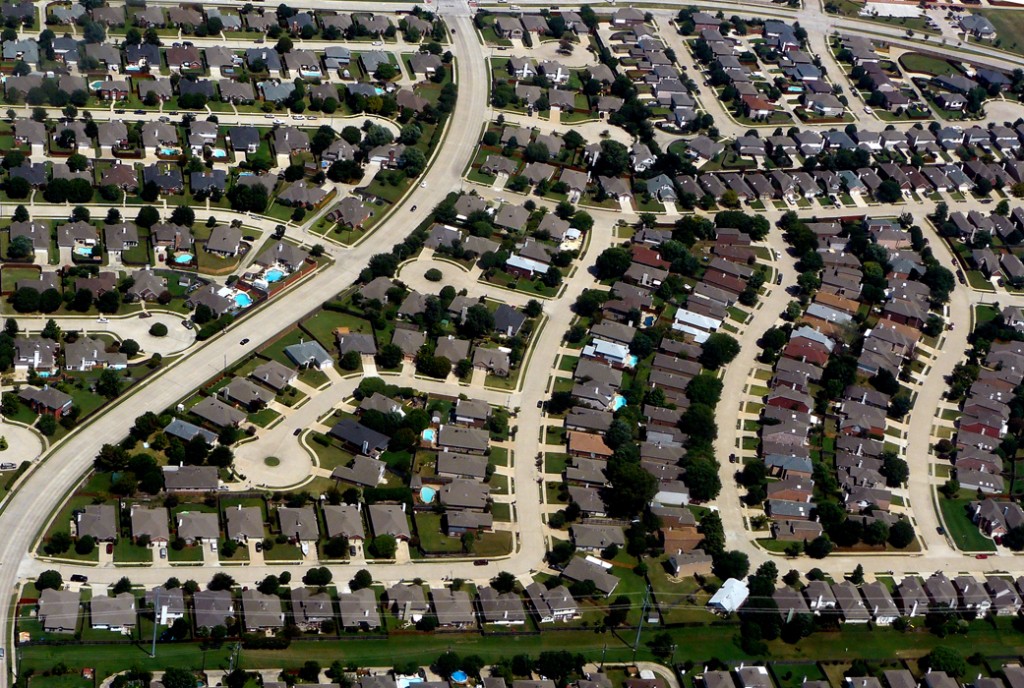Reading Hans Zeiger’s recent post about a new book from the Brookings Institution on the rise of poverty in the suburbs, I was reminded of an article I read last fall on another, somewhat related topic. The piece summarized the results of a study examining the use of federal housing subsidies to move recipients out of poor neighborhoods and into more affluent ones. The researchers examined household earnings, employment, education levels and other measures to determine the effects of the change. Contrary to predictions, after ten years there were few if any changes in more tangible outcomes like earnings power and quality of employment. Recipients did report increased levels of physical and mental health, however—notably, higher levels of happiness—when compared to poor families who remained in the old neighborhood. How much happier? About $13,000 worth. Families who earned about $20,000 a year were as happy in their new neighborhoods as those earning closer to $33,000.
The study’s authors appear puzzled by this fact, surmising that it could be due to increased feelings of safety. Of course this could be true, but I suspect that there are deeper issues at play here—much less tangible ones. Perhaps these people were happier in their new environments because they were surrounded by a more intact version of the American dream than that to which they had previously been accustomed. More stable families, more involvement and engagement with one’s community, more sense of self-agency, more pride of ownership and care for one’s environment. Let me tell you, it’s very difficult to uphold these values in isolation, surrounded by disintegration and denigration. What role does place play in contributing to one’s psychological well-being and, even further, degrading or reinforcing virtue? This is hardly a novel thought, but I think it is an important factor here.
I lived in the Bronx for five years. I can’t tell you how strange it was to find myself in West Chester, Pennsylvania, recently for a company meeting. Suddenly, I felt bad about jaywalking, motivated to observe even the tiniest niceties within this law-abiding community. Being surrounded by order and discipline again had a tremendously powerful psychological effect on me which was perhaps more apparent because of the relative anarchy from which I’d just come.
As a side note, I was also struck by the “deviant” culture of skateboarding in the area, so tame a form of rebellion in comparison to the rampant gang involvement, lonely and directionless teens, and young girls old before their time which formerly surrounded me. This skater culture was teens’ exploration of nascent adulthood, safely contained within the stability of family and community. They probably wouldn’t be flattered thatI found their freedom of self-expression cute and comforting, but I did.
Living in a stable, engaged community may not have correlating effects on educational achievement and other outcomes in the short-term, but perhaps there are deeper, longer-term effects. After all, this contributes in important ways to motivation of the best kind—internal striving for betterment that is reinforced by the culture that surrounds it. The two have compounding effects.
Now West Chester, Pennsylvania, is not exactly a suburb. It has a life, a core, a united feeling and purpose that many suburbs lack. But there is a lot to be said for a change of scenery in influencing one’s behavior. I think that Hans has it right in saying that there is tremendous opportunity for carving out new, real community even within these suburbs for their growing population of low-income residents.
What separates a small borough like West Chester from many suburbs? There are many things, but a big one is a deep familiarity and regular interaction with the larger community as opposed to the self-contained family autonomy idolized through so many subdivisions. You walk around. You see neighbors sitting on their porches. You see the same people working in the same businesses regularly.
Perhaps one way philanthropists could help promote attachment and investment in place is by creating more opportunities for basic human interaction, contact among community members who might not otherwise meet—funding cultural events like street festivals, live music, community theater in the park, farmers markets. Building centrally-located parks as gathering points. Investing in the local libraries, churches and other existing institutions that form civil society. Seeing and knowing the people around you is one necessary precursor to more meaningful community engagement and vitality.






